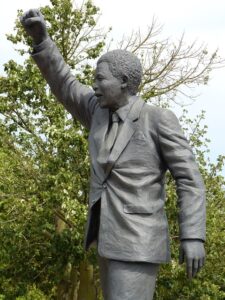Types of Prose:
What is Prose?
Prose:
- Prose is a form of written or spoken language that follows a natural flow, unlike the rhythmic structure found in poetry.
- According to the dictionary, ‘Prose is a non-metrical form of language’
- It is the most common form of writing, everything from novels and short stories to essays and articles is written in this format.
- There are various types of prose and prose styles, each serving different purposes and audiences.
Prose can be divided into three categories:
- Non Fictional Prose
- Fictional Prose
- Epic Prose
I. Non-fictional prose is characterized as a work primarily based on reality, even though it contains some elements of fiction. Some examples of non-fictional prose are Autobiographies, Biographies, Memoirs, Travelogues, and essays.
I. Autobiography :

- An autobiography is a self-written account of a person’s life.
- It describes the individual’s experiences, achievements, challenges, and significant events from their perspective.
- An autobiography provides a first-hand insight into the writer’s thoughts, feelings, and personal reflections on their life journey.
- It also portrays his weakness, his hobbies, his likes and dislikes.
- Autobiographies often cover a person’s life, but sometimes they can also focus on specific periods or events that were particularly impactful.
Famous Autobiographies:
- “The Story of My Life” by Helen Keller:
- A moving account of Keller’s journey as a deaf and blind individual overcoming immense challenges with the help of her teacher, Anne Sullivan.
- “Long Walk to Freedom” by Nelson Mandela:
- Chronicles Mandela’s life, his struggle against apartheid in South Africa, and his journey to becoming the nation’s first black president.
- “Wings of Fire” by Dr. A.P.J. Abdul Kalam:
- The autobiography of India’s former President Dr. A.P.J. Abdul Kalam and renowned scientist, detailing his journey from a small-town boy to a leading scientist and visionary leader.
Conclusion:
Autobiographies serve as windows into the lives of individuals, offering personal, historical, and cultural insights. They inspire, educate, and connect readers to the author’s unique experiences, often leaving a lasting impact through their honesty and relatability.
II. Biography:

A biography is a detailed account of a person’s life, written by someone else. It explores the life, achievements, challenges, and experiences, often providing insights into their personality, relationships, and historical context.
- Typically written in the third person, offering an objective perspective on the subject’s life.
- Includes verified details and events about the subject’s life, ensuring authenticity.
- Often follows the timeline of the subject’s life, from birth to significant achievements and death (if applicable).
- Highlights the person’s contributions, influence, and legacy in their field or society.
- Provides insights into the historical, social, and cultural context of the subject’s life.
- Though interpretations and judgments may be included, biographies aim to present a balanced view of the individual.
Examples of Famous Biographies:
- “Steve Jobs” by Walter Isaacson:
- A detailed account of Steve Jobs’ life, exploring his journey as the co-founder of Apple Inc., his innovations, leadership style, and complex personality.
- “The Diary of Anne Frank” by Anne Frank and Edited by Otto Frank:
- Although Anne Frank wrote her diary, it is considered a biographical work edited and compiled posthumously by her father, Otto Frank, shedding light on her life during the Holocaust.
Conclusion:
Biographies allow readers to learn about influential figures through the lens of an author. By exploring the lives of extraordinary individuals, they inspire and educate, offering valuable insights into human achievements and struggles.
III. Memoirs:
A memoir is also a type of autobiographical writing that focuses on specific events, experiences, or periods in the author’s life rather than covering their entire life story. Unlike a full autobiography, which typically spans the author’s life from birth to the present, a memoir zeroes in on particular themes, relationships, or significant moments that have shaped the author’s identity or worldview.
- They are reflective and personal.
- Offer deep insights into the author’s thoughts and emotions during the experiences they describe.
- They are usually written in the first person and aim to connect with readers by sharing intimate details and lessons learned from the author’s life.
While autobiographies tend to be more comprehensive and chronological, memoirs are often more narrative-driven and may not follow a strict timeline, allowing for a more creative exploration of the author’s life.
Travelogue:

A travelogue is a written account or record of a person’s experiences, observations, and adventures during their travels. It often includes descriptions of the places visited, the people met, the culture encountered, and the emotions felt along the journey. Travelogues can be either factual or more literary, blending storytelling elements with factual information about the destinations.
- Travelogues are usually written in the first person, giving readers a personal perspective on the author’s travel experiences.
- They can be informative, providing practical details about locations, or they can be more reflective, focusing on the personal impact of the journey.
- Travelogues often include vivid descriptions, anecdotes, and insights that help readers visualize the places and feel they are accompanying the author on their travels.
Periodical Essay:
- A periodical essay is a type of essay that was published in a periodical or magazine, typically during the 18th century in English literature.
- These essays were usually short, informal, and written on a variety of topics, ranging from social issues and manners to politics, literature, and philosophy.
- Periodical essays were intended for a broad audience and were often characterized by their accessibility, wit, and conversational tone.
- Writers such as Joseph Addison and Richard Steele played a key role in its development.
- Addison and Steele co-founded and contributed to famous periodicals like The Tatler (1709-1711) and The Spectator (1711-1712).
- These essays were published serially, often daily or weekly, and were designed to entertain and educate the middle-class readership of the time.
The periodical essay was an important vehicle for social commentary and played a significant role in shaping public opinion. It also contributed to the development of the essay as a literary form, influencing later essayists and writers.
Formal Essay:
A formal essay is a type of writing that adheres to a structured format and employs a serious tone. It is often used in academic, professional, or scholarly contexts. Here are the key characteristics of a formal essay:
- Structured Format:
- Introduction: Presents the main idea or thesis statement and outlines the essay’s purpose.
- Body: Consists of multiple paragraphs, each focusing on a specific point or argument that supports the thesis. Each paragraph typically includes a topic sentence, evidence or examples, and analysis.
- Conclusion: Summarizes the main points, restates the thesis in light of the evidence presented, and offers final reflections or implications.
- Objective Tone:
- Uses a serious and impersonal tone, avoiding casual language, slang, or colloquialisms.
- Emphasizes clarity and precision in presenting information.
- Formal Language:
- Employs standard grammar, punctuation, and vocabulary.
- Avoids contractions (e.g., use “do not” instead of “don’t”) and informal expressions.
- Evidence-Based:
- Relies on credible sources and evidence to support arguments or claims.
- Includes citations and references as required, following a specific style guide (e.g., APA, MLA, Chicago).
- Critical Analysis:
- Focuses on analyzing and evaluating information rather than merely describing or summarizing.
- Demonstrates a clear understanding of the topic and engages with different perspectives.
- Clear Purpose:
- Addresses a specific topic or question with a clear thesis or central argument.
- Maintains focus on the essay’s purpose throughout, ensuring that all content is relevant to the main argument.
- Logical Organization:
- Presents ideas in a logical sequence, with clear transitions between paragraphs and sections.
- Ensures that each point builds upon the previous one to develop a coherent argument.
- Professional Presentation:
- Adheres to formatting guidelines, including margins, font size, and spacing.
- Is free from spelling and grammatical errors.
Formal essays are often used in academic settings, research papers, professional reports, and other contexts where a structured, well-reasoned presentation of ideas is required.
READ MORE :-
Dream Children: A Reverie by Charles Lamb
“The Terror” – Guy de Maupassant
Historical Novel: Overview, Origin, Development, and Major Writers
“Nectar in a Sieve” by Kamala Markandaya
WATCH US at Study English Literature – YouTube
